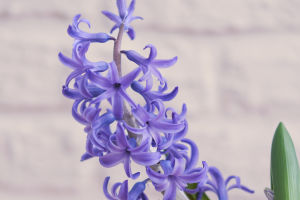The round, fuzzy, white dandelion is a childhood memory for many, evoking a sense of wonder and nostalgia.
It's a common sight in fields and meadows, and its seeds drifting in the wind capture the imagination.
But how does a dandelion seed, devoid of wings like birds or insects, manage to travel hundreds of meters or even farther through the air? The answer lies in the unique flight mechanism of the dandelion seed, a marvel of nature that has intrigued scientists for decades. Through experiments and observations, researchers have uncovered the secrets behind the dandelion seed's airborne journey.
Scientists constructed a vertical wind tunnel capable of keeping the seeds hovering at a stable altitude. They then introduced dandelion seeds into the wind tunnel and employed techniques such as long exposure photography and high-speed imaging to observe the airflow around the seeds. What they discovered was a phenomenon known as a "separated vortex ring."
A separated vortex ring is a ring of air bubbles formed by the seed's furry crown hairs, resembling a vortex. This vortex forms vertically above the top of the dandelion seed, below the crown hairs, and remains separate from the seed itself. A pressure difference is created between the airflow generated by the movement of the crown hairs and the airflow around the seed, resulting in the formation of a vortex annulus. While the vortex circulation increases air resistance, it also allows the seed to slow its descent, akin to a parachute. However, slowing the rate of descent alone isn't enough to ensure that the dandelion can fly long distances. Stability is crucial for maintaining altitude over extended periods. The separated vortex ring plays another crucial role in this regard—it stabilizes in the lower part of the dandelion crown hairs at a fixed distance.
The crown hairs, consisting of slender filaments radiating from a central stalk like spokes on a bicycle wheel, are aptly named "seed spokes." The number of these seed spokes typically ranges from 90 to 110, and the porosity between them is precisely regulated. This consistency is key to stabilizing the separated vortex above the dandelion seed, enabling it to remain stable over long distances.
To confirm this theory, scientists conducted experiments, modeling a range of openings from solid discs to discs with 92 percent air, resembling the structure of a dandelion seed. They designed small silicon discs to mimic these spokes and tested them in a wind tunnel. The results were conclusive: only the disc closest to the dandelion seed could maintain the separated vortices. Any reduction in the number of openings by 10 percent compromised the stability of the separate vortices.
This consistency makes the dandelion seed four times more efficient at maintaining altitude than a man-made parachute. Despite being capable of traveling almost a kilometer or more during flight, a dandelion seed typically lands within 2 meters of the flower it originated from—an astonishing feat of precision regulation.
The intricate structure of the dandelion seed's crown hairs and the separated vortex rings it forms are the secrets behind its ability to glide effortlessly through the air. This remarkable mechanism has inspired scientists to explore its potential applications, including the design of miniature aerial drones for monitoring air pollution, offering a balance between economic and ecological benefits.


